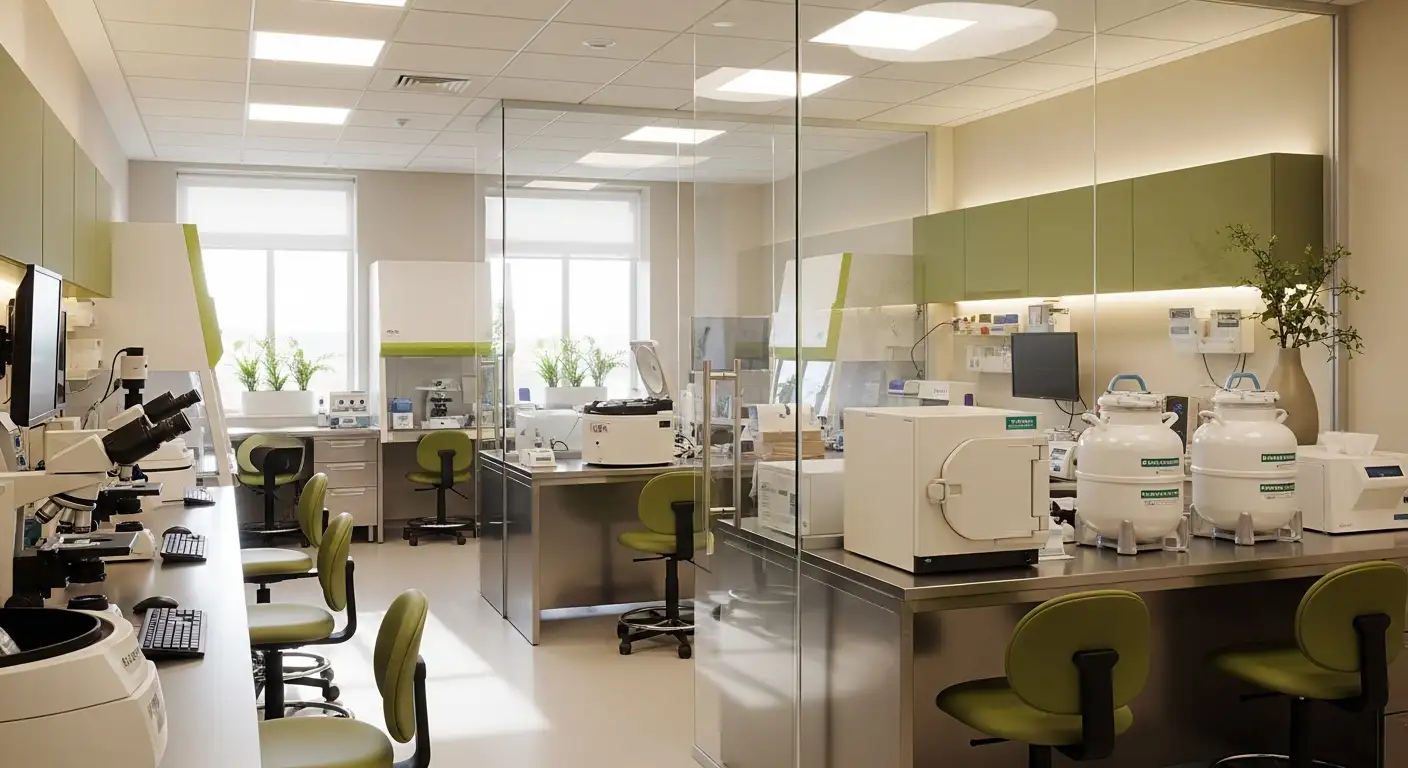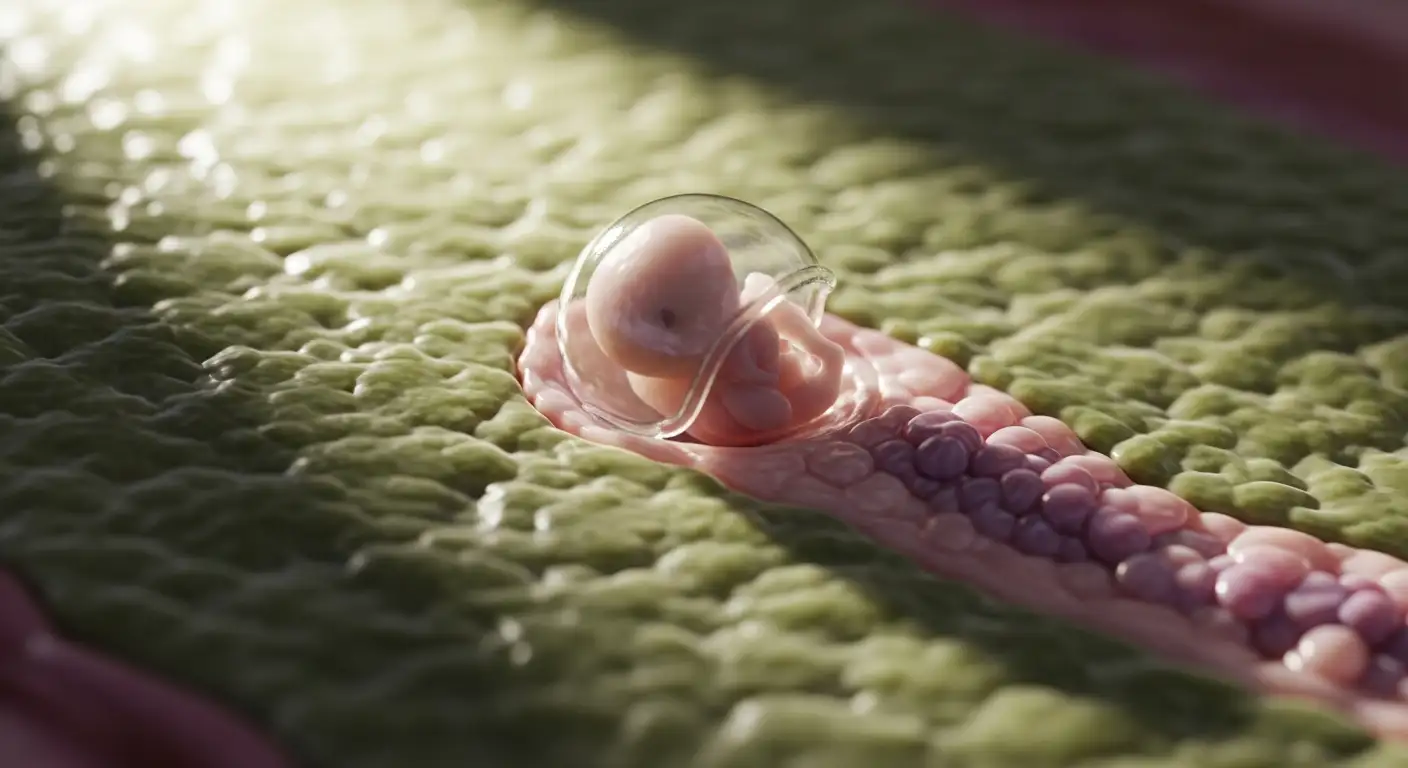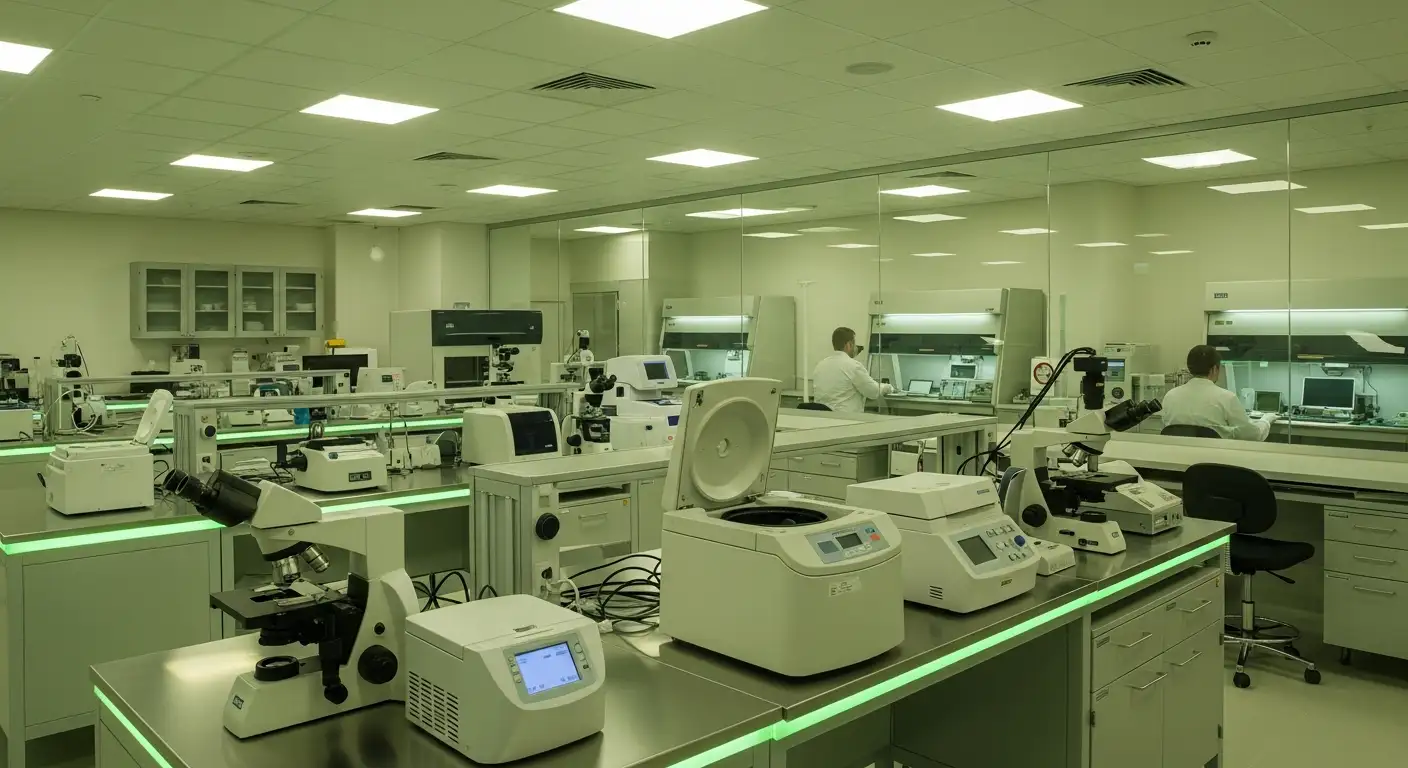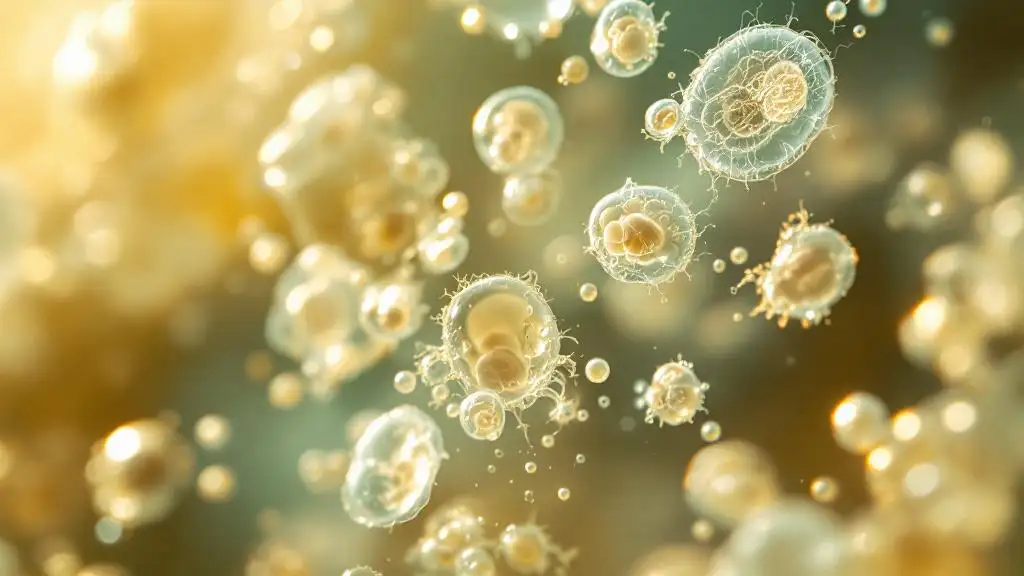The role of follicle-stimulating hormone (FSH) in fertility
Unlocking Fertility: The Crucial Role of Follicle-Stimulating Hormone (FSH)

Understanding FSH and Its Significance in Reproduction
Follicle-Stimulating Hormone, commonly known as FSH, is a cornerstone of human fertility. Produced by the pituitary gland, this hormone governs pivotal processes in sexual development and reproductive health for both women and men. Understanding FSH's biological role, regulation, and clinical applications is vital for anyone navigating fertility treatments or seeking a deeper grasp on reproductive health.
FSH: The Biological Architect of Sexual Development and Reproduction
What is the role of FSH in sexual development and reproduction?
Follicle-stimulating hormone (FSH) is central to sexual development and reproductive function in both males and females. In women, FSH stimulates ovarian follicles to grow and prepare eggs for ovulation, thereby regulating the menstrual cycle. In men, it induces and maintains spermatogenesis by acting within the testes, helping to sustain sperm production alongside testosterone.
Where and how is FSH produced?
FSH is produced by the anterior pituitary gland under the stimulation of gonadotropin-releasing hormone (GnRH) from the hypothalamus. This process operates through the hypothalamic-pituitary-gonadal axis, which tightly regulates FSH secretion based on hormonal feedback from the gonads and other factors.
What are the target cells for FSH?
FSH targets specific cells equipped with FSH receptors. In females, these receptors are found on granulosa cells surrounding ovarian follicles — FSH here promotes follicular growth and estrogen production. In males, FSH receptors exist on Sertoli cells in the testes, where the hormone supports spermatogenesis and sperm maturation.
How does FSH function during fetal development and puberty?
During fetal development, FSH levels reach a peak mid-pregnancy, contributing to the maturation of ovarian follicles in females and seminiferous tubules in males preparing for future reproductive function. At puberty, FSH levels rise, stimulating the testes to produce testosterone in boys and the ovaries to produce estrogen in girls, facilitating the development of secondary sexual characteristics and reproductive maturity.
| Aspect | Males | Females | Biological Impact |
|---|---|---|---|
| Production Site | Anterior pituitary gland | Anterior pituitary gland | Regulated by hypothalamic-pituitary-gonadal axis |
| Key Target Cells | Sertoli cells in testes | Granulosa cells in ovarian follicles | Stimulate spermatogenesis; follicular growth |
| Role in Development | Spermatogenesis initiation and maintenance | Follicular maturation and ovulation | Supports sexual maturation and fertility |
| Role in Fetal Stage | Peak in midpregnancy aids seminiferous tubule maturation | Peak in midpregnancy aids follicular maturation | Prepares reproductive organs for puberty |
| Role in Puberty | Stimulates testosterone production | Stimulates estrogen production | Drives secondary sexual characteristics |
FSH Regulation and Hormonal Interactions: The Hypothalamic-Pituitary-Gonadal Axis
How is FSH production regulated?
Follicle Stimulating Hormone (FSH) production is tightly controlled by the hypothalamic-pituitary-gonadal (HPG) axis. The hypothalamus releases gonadotropin-releasing hormone (GnRH), stimulating the anterior pituitary gland to secrete FSH alongside luteinizing hormone (LH). This axis ensures coordinated control over reproductive processes, allowing FSH to fulfill its role in sexual development and fertility.
What hormonal feedback mechanisms affect FSH levels?
FSH secretion is modulated through negative feedback loops to maintain hormonal balance. In females, estrogen produced by developing ovarian follicles inhibits further FSH secretion once sufficient follicle growth is achieved. This feedback helps regulate the menstrual cycle and prevent overstimulation of the ovaries.
In males, Sertoli cells of the testes secrete inhibin B, which specifically suppresses FSH release without significantly affecting LH. This feedback mechanism helps sustain proper concentrations of FSH needed to support ongoing spermatogenesis.
What is the impact of GnRH secretion patterns on FSH and LH?
GnRH is released in a pulsatile manner, and this pattern profoundly influences the balance between FSH and LH secretion from the pituitary. Variations in pulse frequency and amplitude can shift the relative amounts of these hormones. Faster pulse frequencies favor LH release, whereas slower frequencies tend to promote FSH secretion. This dynamic regulation allows the reproductive system to adapt hormone levels precisely during different phases such as puberty, the menstrual cycle, and pregnancy.
Overall, the interrelated feedback mechanisms and pulsatile GnRH secretion within the HPG axis provide a responsive and flexible system controlling FSH levels according to the body's reproductive needs.
FSH in Female Fertility: Menstrual Cycle, Ovarian Reserve, and Assisted Reproductive Technologies

How does FSH regulate the menstrual cycle and ovarian follicle development?
Follicle Stimulating Hormone (FSH) plays a central role in the menstrual cycle by stimulating ovarian follicles to grow. This process promotes the maturation of eggs and prepares them for ovulation. Additionally, FSH stimulates granulosa cells in follicles to produce estrogen through aromatase activity, which is critical for follicular development and the regulation of the menstrual cycle.
How do normal FSH levels vary in females?
FSH levels fluctuate throughout the menstrual cycle to support ovarian function. Typical ranges include about 3.3 to 11.3 mlU/mL during the early follicular phase (days 1 to 14), rising to 5.2 to 20.4 mlU/mL around ovulation, and then decreasing to 1.8 to 8.2 mlU/mL during the luteal phase (days 14 to 28). These variations reflect FSH’s role in follicular recruitment and ovulation timing.
What does elevated FSH indicate in female fertility testing?
Elevated FSH levels in women often indicate diminished ovarian reserve, meaning the ovaries contain fewer or lower-quality eggs. This can result from aging or conditions like primary ovarian insufficiency. High FSH levels are also associated with poorer outcomes in fertility treatments such as in vitro fertilization (IVF), especially for women over 35 years of age.
What does low FSH suggest?
Low FSH levels may reflect dysfunction in the hypothalamus or pituitary gland, impairing normal ovulation. Such hormonal imbalances can lead to infertility due to inadequate stimulation of ovarian follicles.
How is FSH used therapeutically in assisted reproductive technologies (ART)?
In ART, exogenous FSH is administered to stimulate multiple ovarian follicles, facilitating controlled ovarian hyperstimulation. Often combined with GnRH agonists or antagonists, this approach optimizes egg retrieval for procedures like IVF. Despite its widespread usage, FSH-based stimulation shows modest pregnancy rates around 15%, with research ongoing to enhance outcomes.
What are the effects of FSH on the endometrial lining?
Recent studies have detected FSH receptors in the endometrial lining throughout the menstrual cycle. Elevated FSH levels can inhibit the functions of endometrial stem cells, including self-renewal, migration, and differentiation. This suppression is mediated by PI3K/Akt and ERK1/2 pathways and may reduce endometrial regeneration and receptivity, potentially contributing to lower implantation rates in fertility treatments.
| Aspect | Details | Clinical Significance |
|---|---|---|
| Menstrual Cycle FSH Range | Early follicular: 3.3-11.3 mlU/mL; Ovulation: 5.2-20.4 mlU/mL; Luteal: 1.8-8.2 mlU/mL | Guides timing for fertility assessment |
| Elevated FSH | Indicates diminished ovarian reserve or ovarian insufficiency | Associated with decreased fertility and IVF success |
| Low FSH | Suggests hypothalamic/pituitary dysfunction | May cause anovulation and infertility |
| FSH in ART | Used for controlled ovarian hyperstimulation, often with GnRH analogs | Stimulates multiple follicles but with modest pregnancy rates |
| Impact on Endometrial Stem Cells | Inhibits regenerative capacity through signaling pathways | May impair implantation and pregnancy outcomes |
FSH in Male Fertility: Spermatogenesis and Hormonal Evaluation
What is the role of FSH in male fertility?
Follicle Stimulating Hormone (FSH) plays a crucial role in male fertility by stimulating Sertoli cells in the testes. These cells provide support for sperm production and help maintain spermatogenesis, the process of sperm formation. FSH works together with testosterone to sustain this essential reproductive function.
How do hormonal interactions regulate FSH in men?
In males, hormonal balance involving FSH is tightly regulated. Sertoli cells produce a hormone called inhibin B, which acts as a negative feedback signal to the pituitary gland. This feedback reduces the secretion of FSH, ensuring that sperm production remains balanced and preventing excessive hormone levels.
What do abnormal FSH levels indicate in male fertility?
Elevated FSH levels in men often indicate primary testicular failure or impaired sperm production. Conditions such as Klinefelter syndrome or exposure to gonadal toxins can cause this. Conversely, low FSH levels may suggest hypothalamic or pituitary dysfunction, such as hypopituitarism, leading to reduced sperm formation and potential infertility.
How is FSH testing used in diagnosing male infertility?
FSH testing is instrumental in diagnosing the cause of male infertility. High FSH values typically signal primary testicular failure, where the testes are unresponsive. Normal or low FSH levels in the presence of infertility may point to obstructive causes or hypothalamic-pituitary issues. This hormonal assessment guides clinicians in choosing effective treatment strategies for patients.
| Aspect | Description | Clinical Relevance |
|---|---|---|
| FSH Role | Stimulates Sertoli cells to support sperm production | Essential for spermatogenesis |
| Hormonal Regulation | Negative feedback by inhibin B to control FSH secretion | Maintains hormonal and sperm production balance |
| High FSH Levels | Suggest primary testicular failure or low sperm production | Indicates gonadal dysfunction, e.g., Klinefelter syndrome |
| Low FSH Levels | Suggest hypothalamic or pituitary dysfunction | Associated with hypopituitarism, Kallmann syndrome |
| Diagnostic Use of FSH Testing | Differentiate between primary testicular failure and obstructive infertility causes | Guides appropriate infertility treatment |
Clinical Assessment of FSH: Testing Protocols and Interpretation in Fertility Evaluation
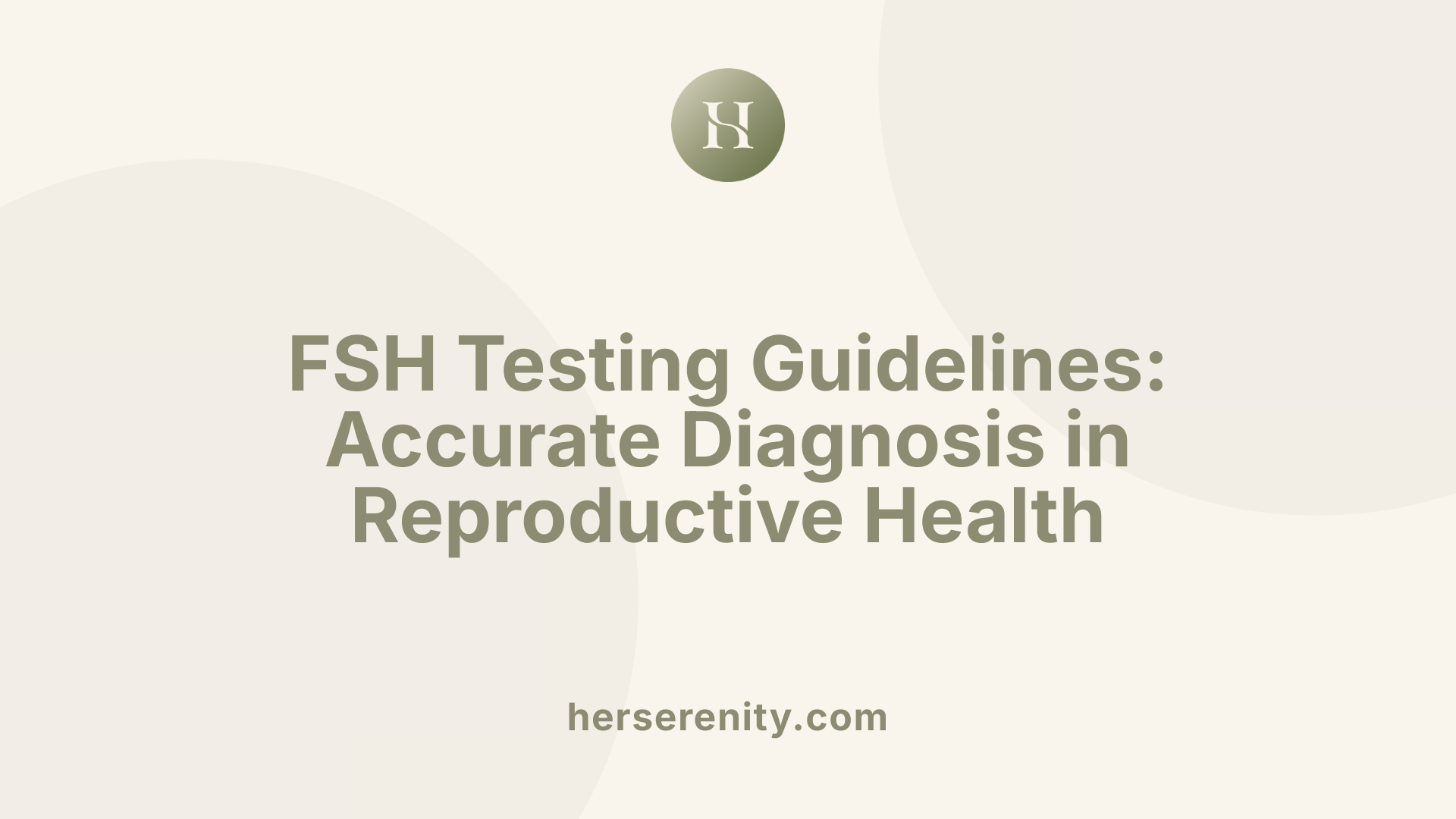
When and How Is FSH Testing Performed?
FSH testing is primarily conducted through blood sampling. For women, the test is usually performed on day 2 or 3 of the menstrual cycle to evaluate basal hormone levels. This timing is essential to obtain consistent and meaningful results related to ovarian function. In men and children, timing for FSH measurement is adapted based on clinical indications.
What Are the Normal Ranges of FSH?
FSH levels vary according to age, sex, and reproductive stage. Typical adult female ranges during the early menstrual cycle (days 1-14) are about 3.3 to 11.3 mlU/mL, with variations at ovulation and later in the cycle. Adult males generally range from 1.6 to 11.0 mlU/mL. Prepubertal and pubertal ranges differ significantly, and menopausal women exhibit elevated FSH levels reflecting ovarian decline.
How Are FSH Test Results Interpreted Clinically?
FSH levels are evaluated alongside other hormonal markers like estradiol and inhibin B, as well as imaging studies, to provide a comprehensive picture of reproductive health. Elevated FSH levels often suggest primary gonadal failure or diminished ovarian reserve, especially relevant in fertility assessments. Conversely, low FSH can indicate hypothalamic or pituitary dysfunction. Interpretation requires considering clinical context and correlating test results.
What Clinical Information Can FSH Testing Provide Beyond Fertility?
In pediatric and adolescent patients, FSH measurement aids in assessing the timing and progression of puberty. Increased levels may indicate precocious puberty, while low levels can suggest delayed pubertal development. In adults, FSH evaluation contributes to diagnosing reproductive endocrine disorders and guides targeted treatment planning.
Are There Special Considerations in FSH Testing?
Proper scheduling within the menstrual cycle is critical for accurate interpretation in women. The blood test involves minimal risk and is generally safe when performed under healthcare supervision. Patients are advised to follow provider instructions regarding timing and preparation to ensure reliable results.
FSH-Related Disorders Affecting Fertility: Hormonal Imbalance and Gonadal Dysfunction
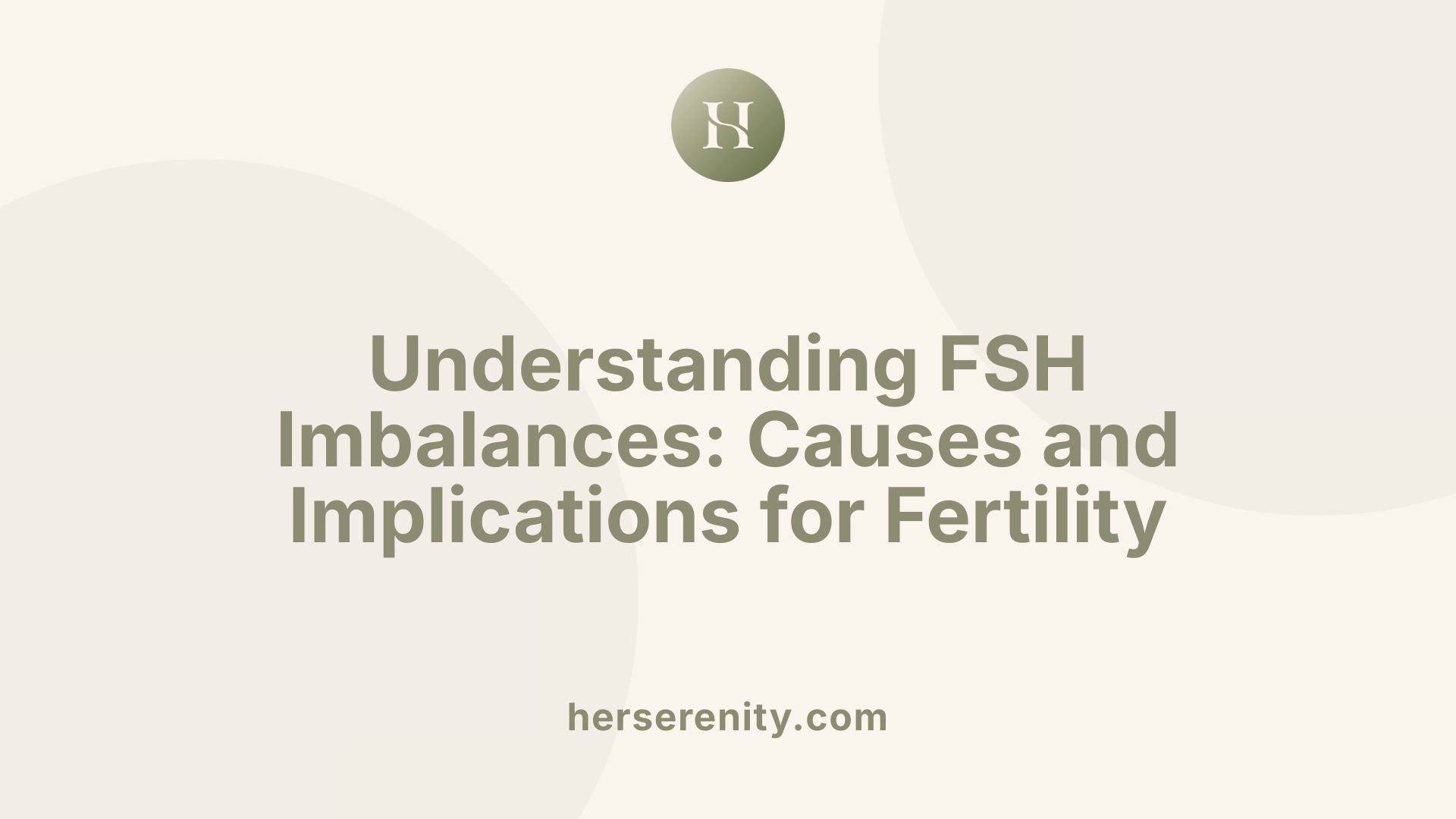
What conditions are associated with high FSH levels?
High levels of follicle-stimulating hormone (FSH) typically indicate primary gonadal failure, where the ovaries or testes fail to respond adequately to hormonal signals. In women, this can present as premature ovarian failure or conditions like Turner syndrome, both characterized by diminished ovarian function. In men, elevated FSH is linked to primary testicular dysfunction such as Klinefelter syndrome, resulting in lowered sperm production. These high FSH levels reflect the body's attempt to stimulate unresponsive gonads.
What conditions cause low FSH levels?
Low FSH concentrations suggest problems at the hypothalamic or pituitary level, affecting hormone production and release. Conditions such as hypopituitarism and Kallmann syndrome impair the secretion of gonadotropin-releasing hormone (GnRH), leading to insufficient FSH levels. This results in incomplete sexual maturation and infertility due to under-stimulation of the gonads.
How does FSH relate to polycystic ovary syndrome (PCOS)?
Polycystic ovary syndrome (PCOS) involves a hormonal imbalance marked by an elevated luteinizing hormone (LH) to FSH ratio. This imbalance stems from abnormal GnRH pulse frequency, causing excessive androgen production and disruption of normal ovarian function. The altered LH:FSH ratio contributes to anovulation and fertility challenges commonly seen in PCOS.
Understanding primary and secondary hypogonadism
Primary hypogonadism, often linked with high FSH levels, refers to intrinsic gonadal failure. Secondary hypogonadism involves low FSH due to pituitary or hypothalamic dysfunction. Differentiating between the two is crucial for diagnosis and treatment, as the origin of hormone imbalance influences therapeutic approaches.
Interactions with other hormonal imbalances
FSH functions within a complex feedback system involving luteinizing hormone (LH), estrogen, testosterone, and inhibin B. Disruptions in this delicate balance may underlie disorders like PCOS or hypogonadism, further complicating reproductive health. Evaluating these hormones together helps in diagnostic clarity and effective fertility management.
Future Perspectives: Improving Fertility Outcomes through Understanding FSH Effects

What are challenges of FSH use in fertility treatments?
Follicle Stimulating Hormone (FSH) is indispensable in fertility treatments such as assisted reproductive technologies (ART). However, despite its critical role in stimulating ovarian follicle development, pregnancy success rates following FSH-based ART hover around a modest 15%. One major challenge is the high cancellation rate of treatment cycles, approximately 85%, largely because the mechanisms behind low implantation and poor pregnancy outcomes remain poorly understood.
How does FSH affect the endometrium and implantation success?
Recent research highlights a less appreciated effect of FSH on the endometrium — the uterine lining where embryo implantation occurs. FSH receptors are highly expressed on endometrial tissue-resident stem cells. Prolonged exposure to elevated FSH inhibits key stem cell functions, including self-renewal, migration, and multilineage differentiation. This suppression is mediated by the PI3K/Akt and ERK1/2 signaling pathways, which regulate cell growth and survival. The reduction in stem cell activity compromises endometrial regeneration and receptivity, critical factors for successful embryo implantation. In vivo mouse studies confirm that FSH treatment hampers stem cell-mediated endometrial growth and differentiation, potentially explaining the poor implantation rates seen in some ART cycles.
Are there potential ways to mitigate FSH's negative effects on fertility?
Encouragingly, blocking the FSH receptor or stimulating the Akt and ERK1/2 pathways can partially reverse the suppression of stem cell functions induced by FSH. These findings open avenues for adjunct therapies targeting these molecular pathways to restore endometrial regenerative capacity. By enhancing endometrial health, such strategies could improve implantation rates and overall pregnancy outcomes in women undergoing FSH-based fertility treatments.
Ongoing research to enhance ART success
Research at leading fertility centers is actively investigating the complex interactions between FSH signaling and endometrial biology. Understanding how to balance the ovarian stimulatory effects of FSH while preserving or enhancing endometrial receptivity remains a priority. Integration of molecular approaches targeting stem cell pathways with current ART protocols may represent the next frontier in improving success rates for patients relying on FSH stimulation.
The future of fertility treatments lies in a comprehensive approach that not only stimulates follicular development but also supports the uterine environment necessary for embryo implantation and sustained pregnancy.
FSH: A Central Hormone Navigating the Path to Fertility
Follicle-Stimulating Hormone serves as a fundamental regulator of human reproductive health, orchestrating critical processes from sexual development to egg and sperm production. Its complex regulation via hormonal feedback loops underscores the delicate balance necessary for fertility. Clinically, FSH measurements provide invaluable insight into reproductive potential and guide treatment in fertility clinics worldwide. While FSH-based assisted reproductive treatments have revolutionized conception efforts, challenges like limited pregnancy success and effects on endometrial receptivity remain. Ongoing research into FSH’s multifaceted roles offers hope for refining therapies and improving outcomes for individuals and couples striving to conceive.
References
- Follicle-Stimulating Hormone (FSH): What It Is & Function
- Physiology, Follicle Stimulating Hormone - StatPearls - NCBI
- Follicle-Stimulating Hormone (FSH): Functions, Levels & Test
- A novel role of follicle-stimulating hormone (FSH) in ...
- Understanding the FSH Hormone: What It Reveals About Your ...
- Follicle-Stimulating Hormone (FSH) Levels Test
- A novel role of follicle-stimulating hormone (FSH) in ...
- Understanding Fertility Hormones: What You Need to Know
- Understanding FSH Levels and Their Role in Fertility Care
- Follicle Stimulating Hormone














